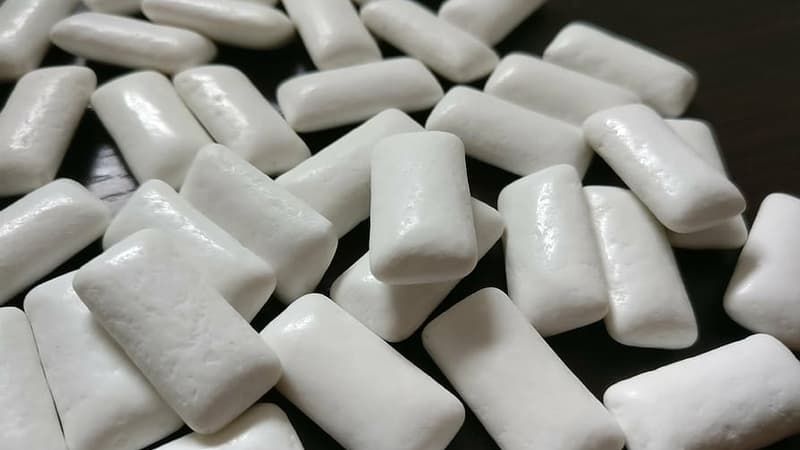Chewing gums release hundreds of microplastics directly in the mouth, according to a study presented by researchers on Tuesday, March 25, who remain very cautious about the possible impact on consumer’s health.
Plastic microparticles (less than five millimeters) have already been detected in air, water, food, containers, synthetic textiles, cosmetics. Every day, humans ingest, inhale or are in contact with the skin with them.
From the lungs to the kidneys, to the brain, microplastics have been found in almost all parts of the human body. If scientists are not certain about their health impacts, many have already sounded an alarm.
There is no evidence of health consequences
“I don’t want to panic people,” Sanjay Mohanty, the main author of this study presented at AFP, told AFP, at a meeting of the American Chemical Society, subject to a publication with colleagues but still not published.
There is no evidence of a direct link between microplastics and alterations of human health, observe this researcher at the University of California in Los Angeles (UCLA).
The objective of the study was rather highlighting a small explored path whereby small plastic fractions, often invisible, penetrate our body: gum.
Lisa Lowe, a doctoral student at the UCLA, chewed seven pieces of ten different brands, then her saliva was subjected to a chemical analysis: a gram of chewed chew chewing on average on average 100 microplastics, but some gums rejected more than 600. The average weight of a chewing rubber is approximately 1.5 gram.
Small quantities
According to these scientists, people who chew around 180 gum per year could ingest about 30,000 microplastics. A messy amount compared to many other opportunities to ingest microplastics, says Sanjay Mohanty. For example, other researchers estimated last year that a liter of water in a plastic bottle contained an average of 240,000 microplastics.
The most commonly sold type of chewing, says synthetic, contains oil -based polymers to obtain the soft effect, the researchers said. However, the packaging does not mention any plastic, retaining the simple expression “rubber -based”.
“No one will tell you what the ingredients are,” said Sanjay Mohanty.
The researchers tested five brands of synthetic gums and five of the natural gums, which use polymers of plant origin, such as the sap of the trees. “We were surprised to see that microplastics abounded in both cases,” Mrs. Lowe told AFP.
For David Jones, a researcher at the British University of Portsmouth (Great Britain), who has not participated in the study, manufacturers should be forced to detail the greatest precision ingredients.
He said he was surprised that researchers have found some plastics that are not known that they are present in chewing gums, which suggests that they can come from another origin, such as drunk water by the doctoral student. But he judges the general “not surprising” results.
“There is no reason to be alarmed” according to manufacturers
People tend to panic a little “when they are told that chewing chewing components are similar to those found” in car tires, plastic bags and bottles, “David Jones also observes.
For Oliver Jones, professor of chemistry at the RIT of the University of Australia, the amount of microplastics measured in chewing gums is “very small” and swallowed particles “they probably pass through you without impact.”
“I don’t think we should stop chewing gum for the moment,” he said.
The National Association of Confections (NCA), in particular that represents GUM manufacturers in the United States, said in a press release that the authors of the study recognized that “there is no reason to be alarmed.”
“We can take advantage of chew gums without danger, as for more than 100 years,” he said, adding that the ingredients have been approved by the American Medicines Agency (FDA).
Chewing gums are also a source of plastic pollution, also reminds Mrs. Lowe, especially when people “spit on the sidewalk.”
Source: BFM TV


